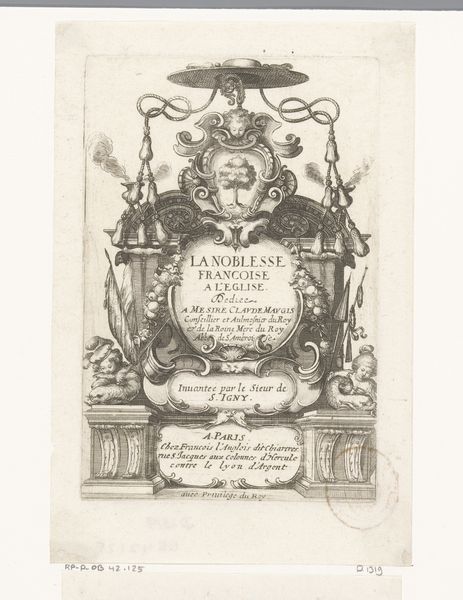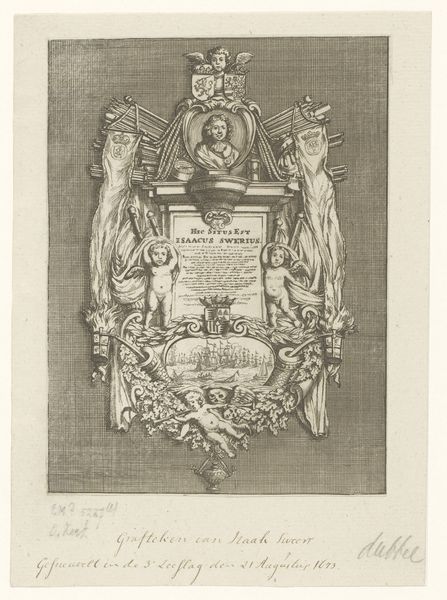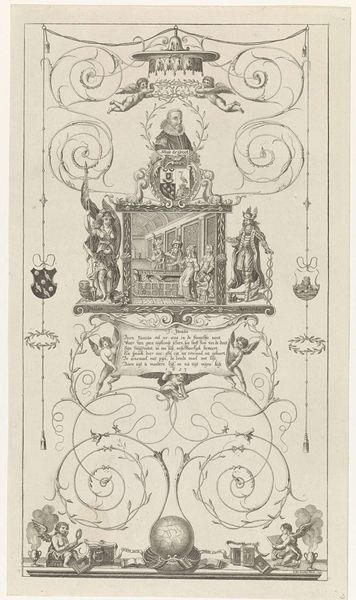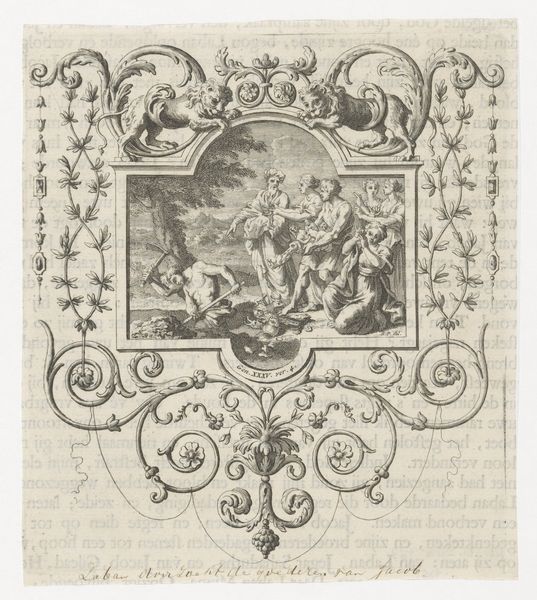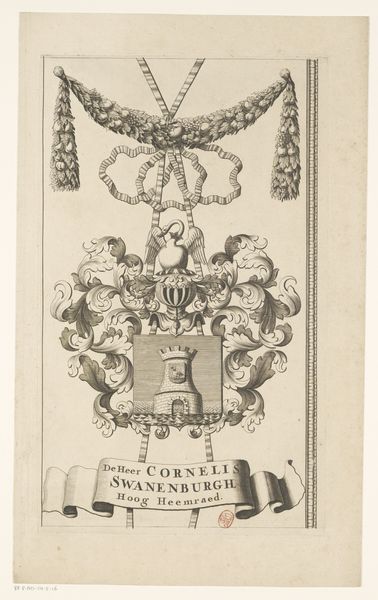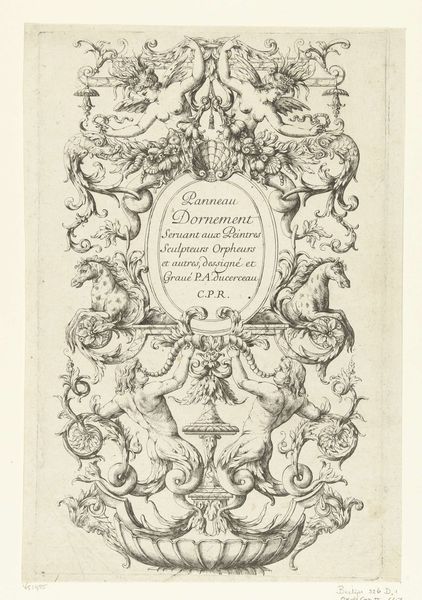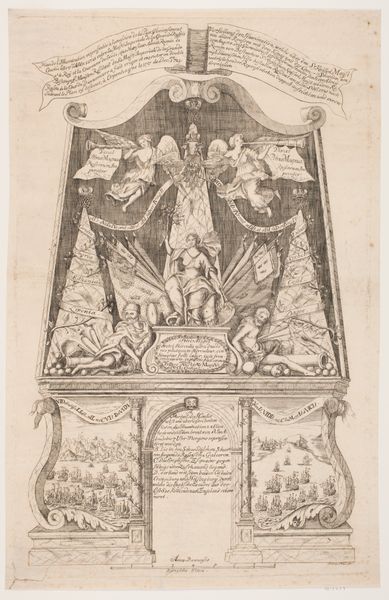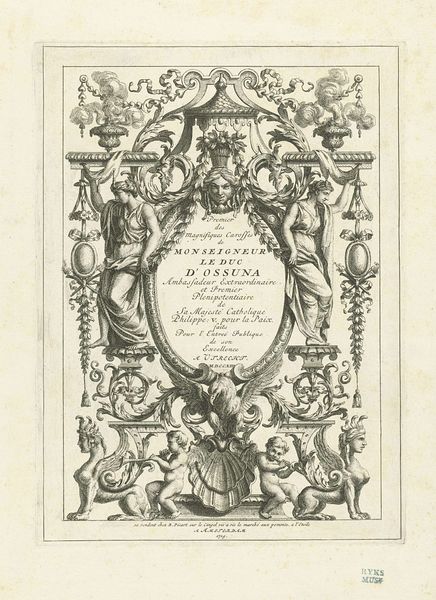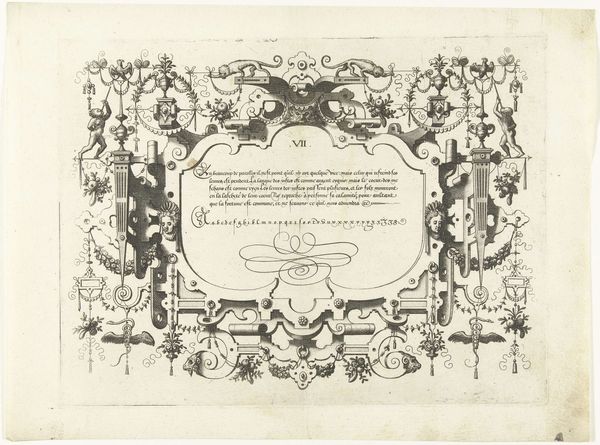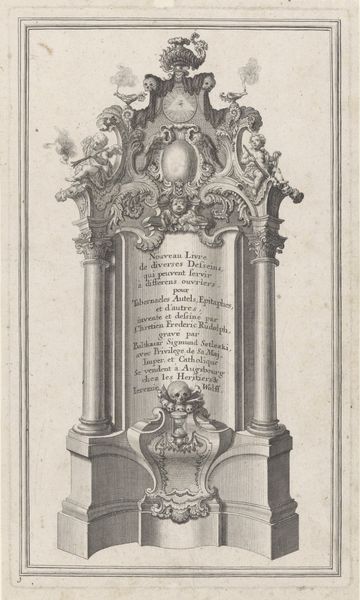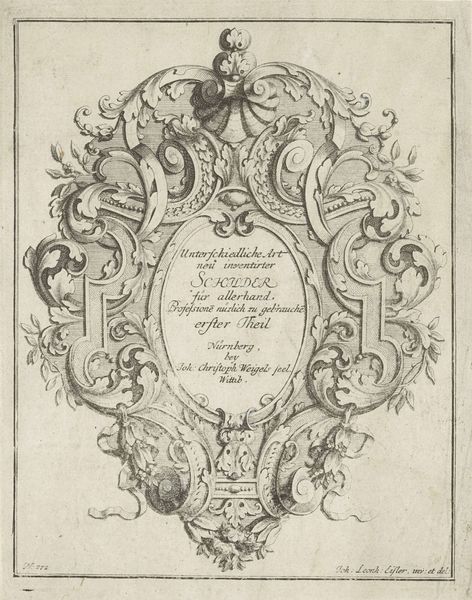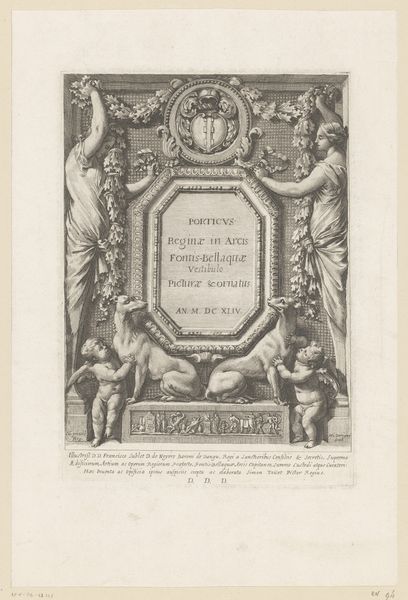
print, engraving
#
portrait
#
baroque
# print
#
history-painting
#
engraving
Dimensions: height 178 mm, width 128 mm
Copyright: Rijks Museum: Open Domain
Curator: The sheer level of detail is remarkable! It’s intricate yet balanced. Editor: Indeed. What we have here is a print from 1690, "Grafteken voor Willem van der Zaan in de Oude Kerk te Amsterdam," or, in English, "Funerary monument for Willem van der Zaan in the Old Church in Amsterdam." Curator: Funerary art always begs the question of intended audience. What message was the creator hoping to send to those who saw this? The overt symbols of status--the crown, the coat-of-arms held by putti--speak to something beyond simple remembrance. Editor: Absolutely. Social status in the Dutch Golden Age was closely linked to naval power and maritime trade. Note the inclusion of naval ships, and an anchor that comprises much of the monument frame itself. Willem van der Zaan, according to the text inscribed on the piece, died on a ship. Curator: It reads "van den schout by nacht." "Admiral," or rather, rear admiral? That confirms his social position was interwoven with maritime history, so its depiction in the visual language of this print seems fitting. But the skull motif adds a dimension— almost a critique of that maritime hubris, doesn’t it? Editor: Mortality was always part of the Baroque mindset. "Memento mori"--remember you must die. It served both as a caution against earthly vanity and a spur to faith. Consider the ships; their scale diminishing as they reach the horizon line implies the brevity of human achievements against the backdrop of eternity. Curator: That interplay of memorialization, status, and mortality provides the thematic backdrop, reminding us of the deeply embedded relationship between politics and power during this historical period. Editor: And perhaps a warning regarding the relationship between the admiral and the city's rulers. Curator: I leave with an appreciation for how the artist weaves together so many thematic threads into a single, compelling commemorative. Editor: I, on the other hand, am reminded that art, even in memoriam, remains a statement, reflecting and reinforcing societal structures.
Comments
No comments
Be the first to comment and join the conversation on the ultimate creative platform.
